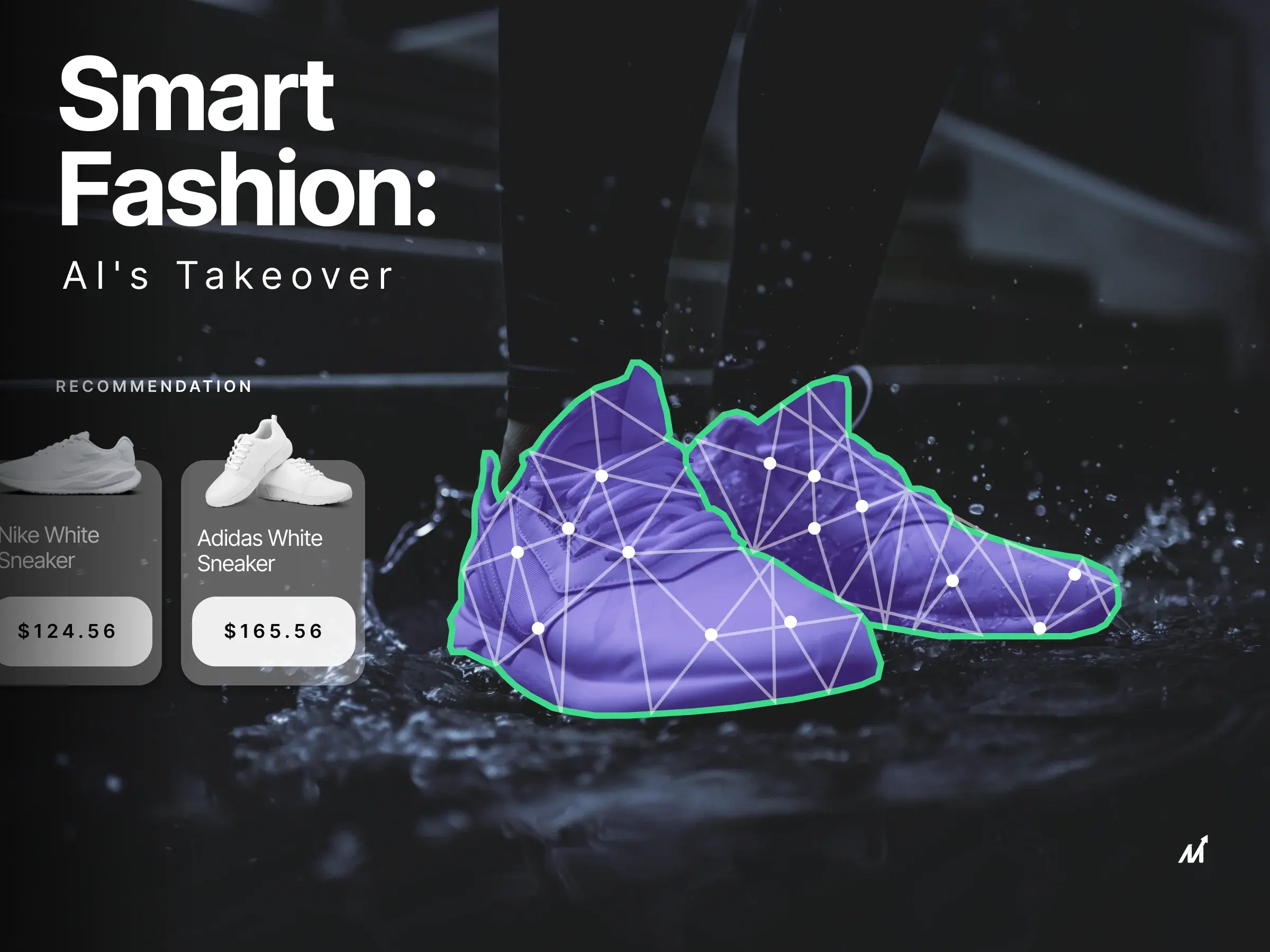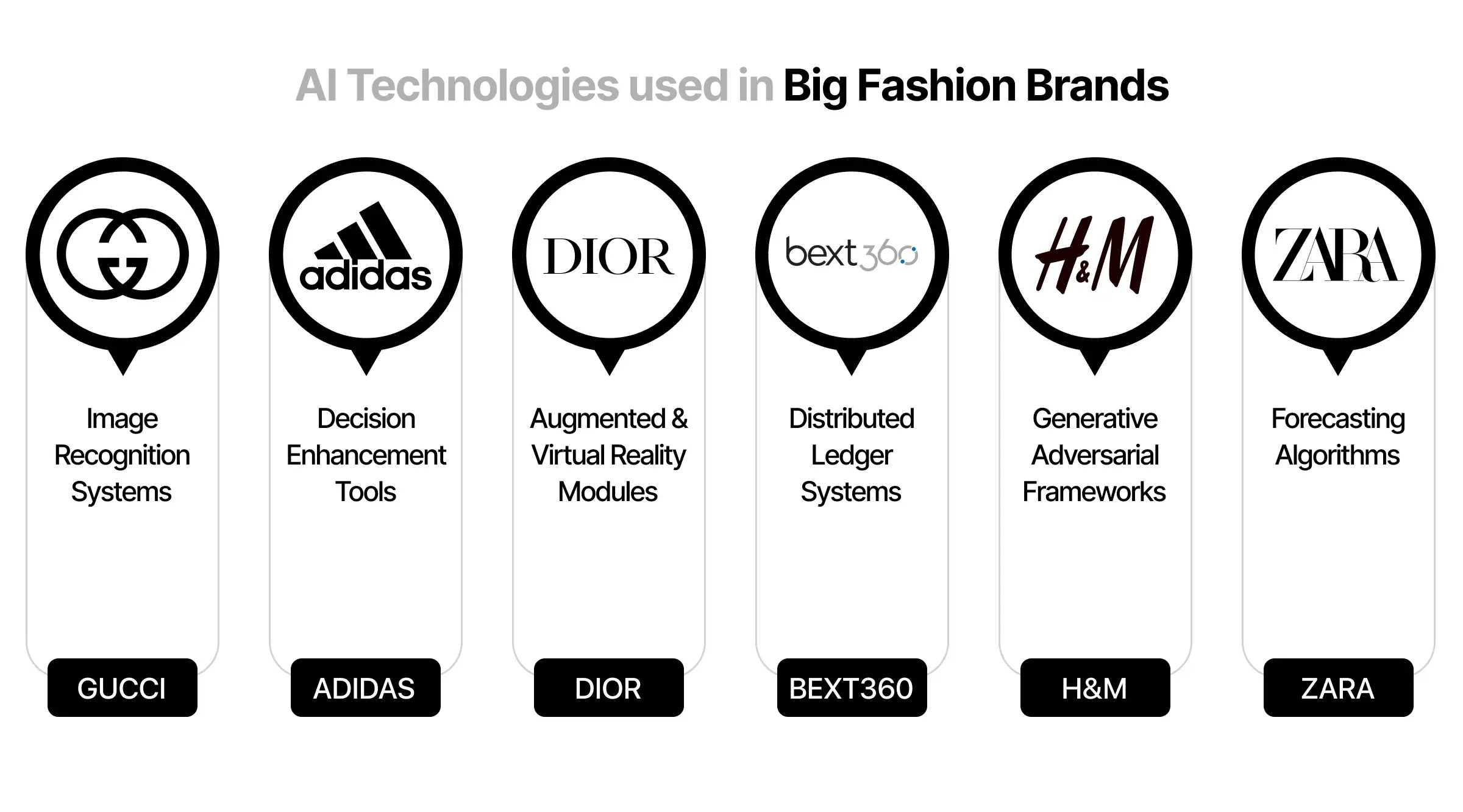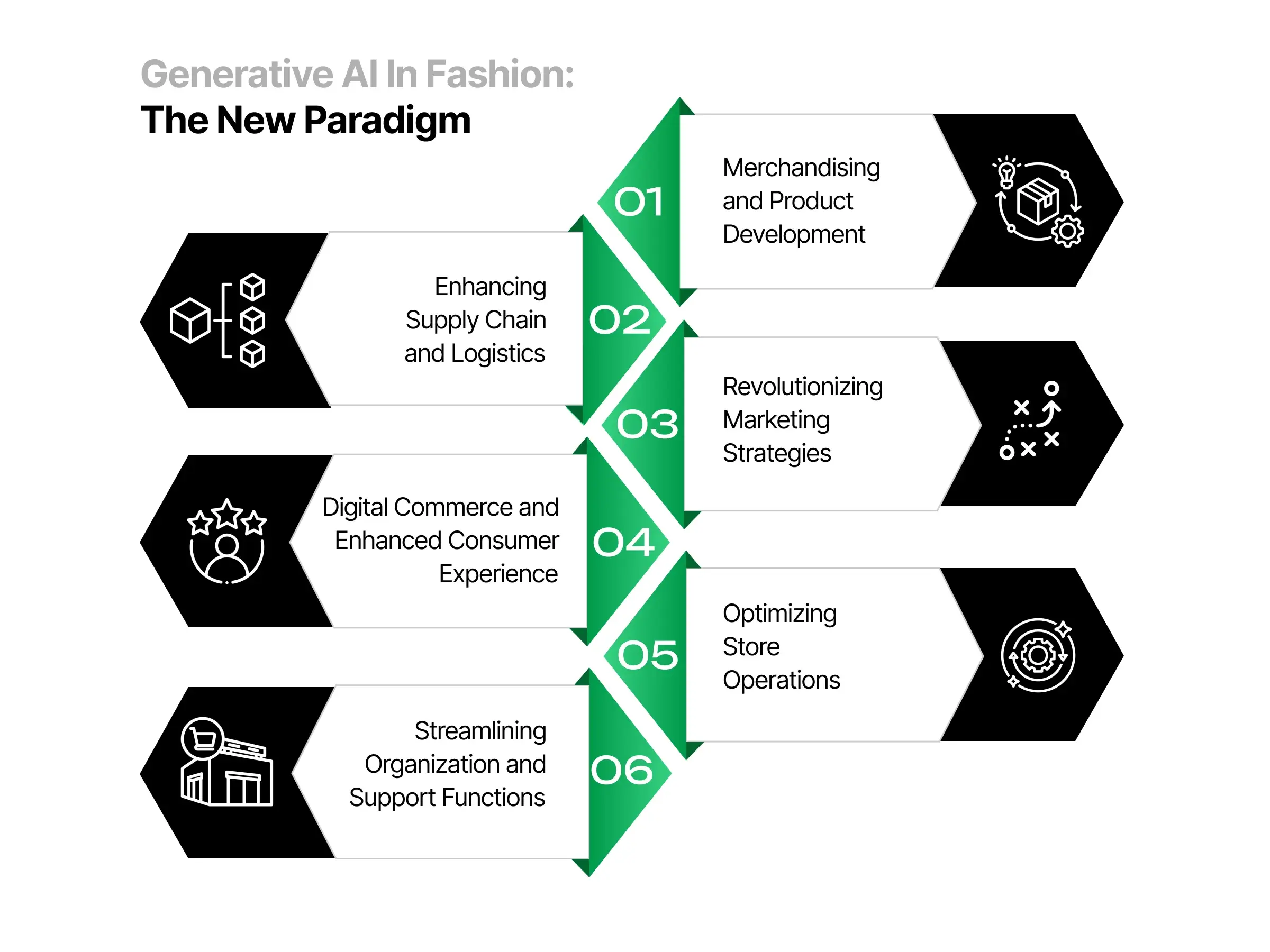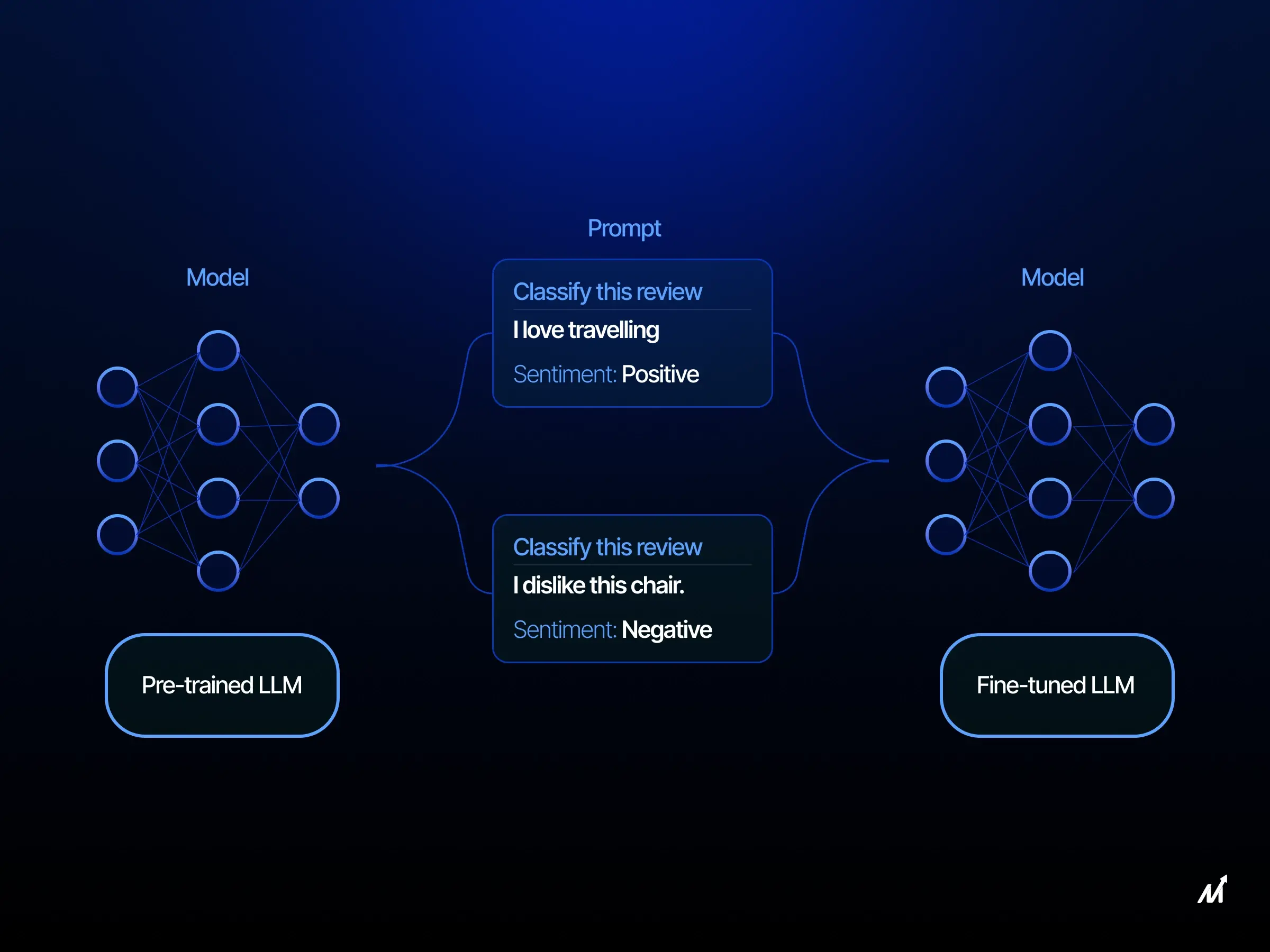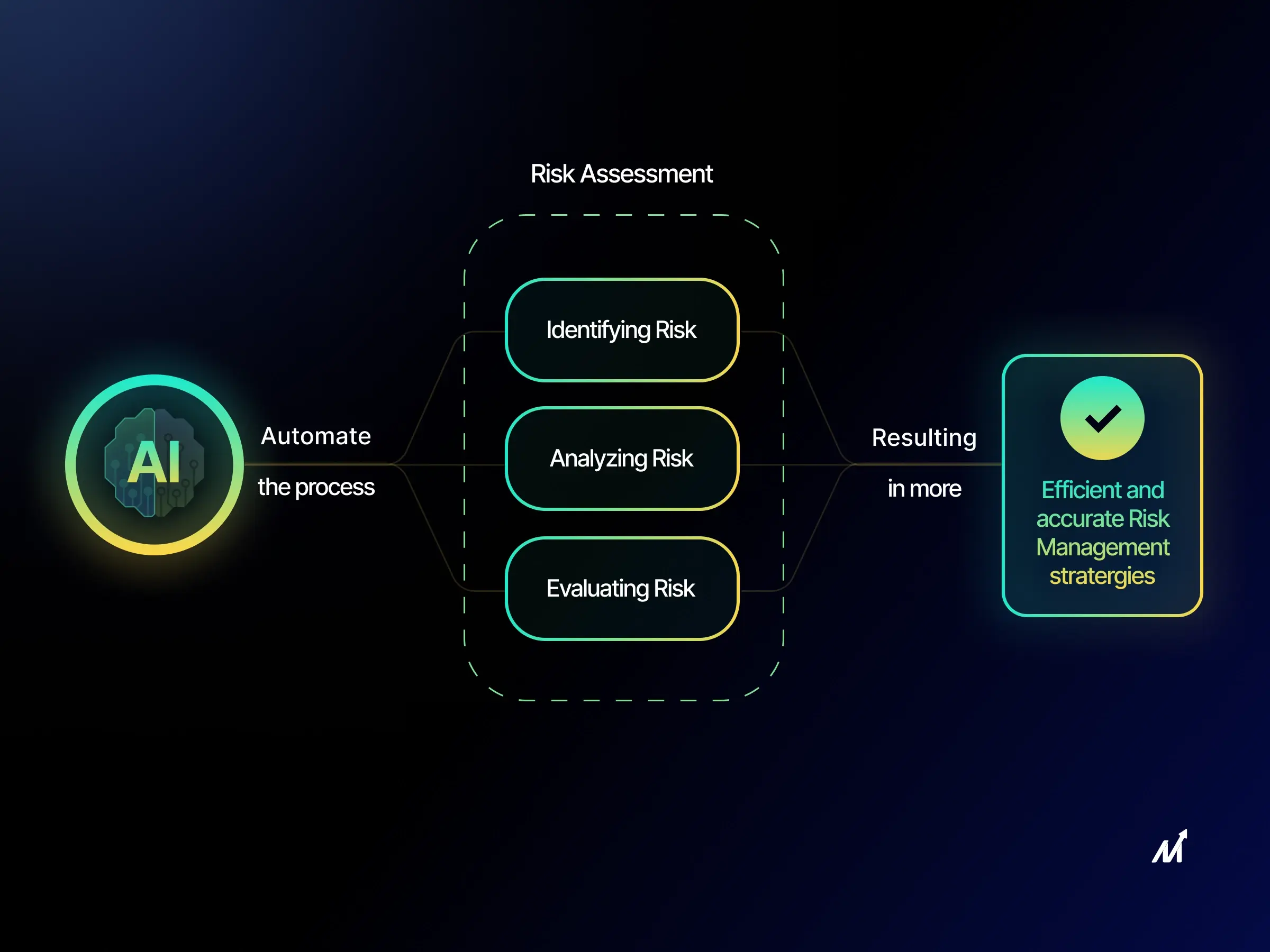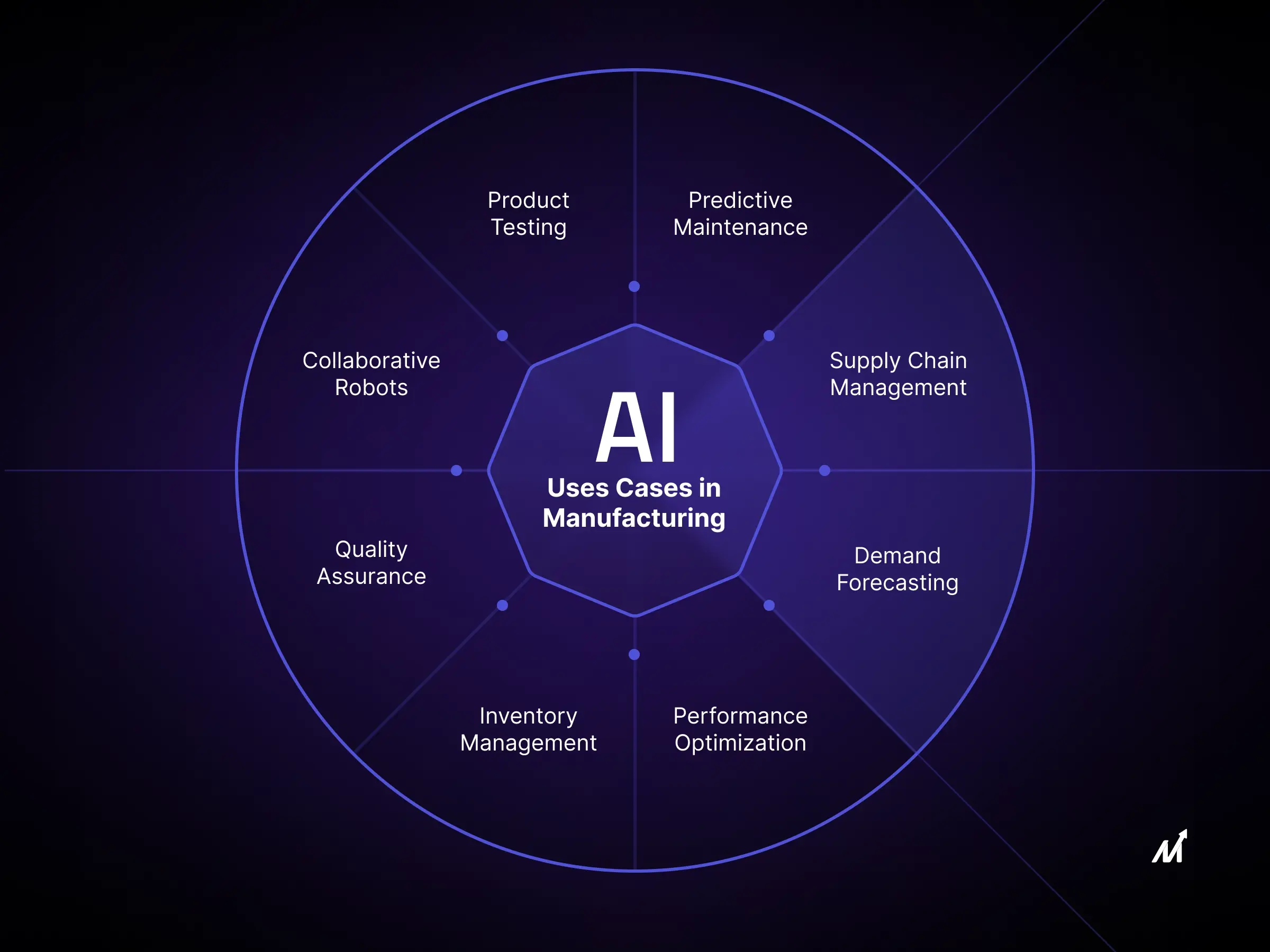Integrating technology, specifically artificial intelligence, with the fashion industry is a beacon signaling its rising importance. This AI in fashion convergence is more than just a mere trend; it is a transformative force reshaping the very fabric of the industry.
AI is now at the forefront of numerous operations in fashion, from trend forecasting to personalized shopping experiences. Its role is becoming increasingly critical due to the competitive advantages it offers, such as enhanced efficiency, creativity, and precision. Data suggests that, in the next three to five years, generative AI could bring between $150 billion and $275 billion to the fashion and luxury markets. This data highlights AI’s role in shaping fashion’s future, not only bringing changes but also adding value. AI can help spot upcoming fashion trends, streamline how clothes are made and supplied, personalize online shopping, and allow for digital previews of outfits. Let’s understand more about AI and fashion.
AI Application Areas in the Fashion Domain
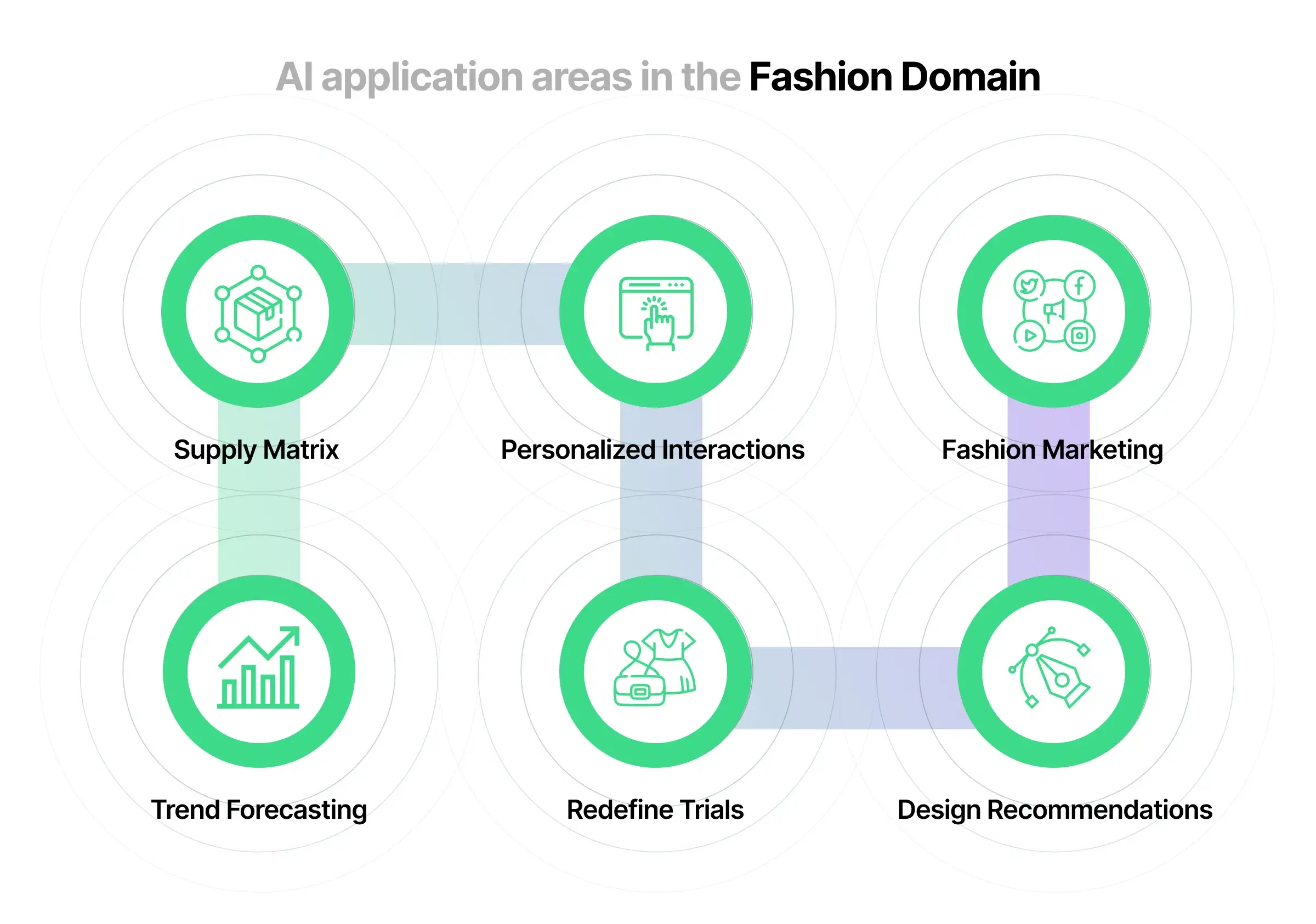
AI’s infusion into this vibrant field is not just transforming how clothes are designed, made, and sold, but also reshaping consumer experiences and expectations. As we stand on the cusp of this technological revolution, let’s explore the diverse and dynamic ways in which AI is stitching its digital threads into the very fabric of fashion.
1. AI can Help with Trend Forecasting
Fashion’s heartbeat is trends. Fashion artificial intelligence changes how businesses spot and ride these waves. Fashion artificial intelligence systems dive deep into vast data from online shops, major fashion events, and digital hubs. They look at fabric types, color trends, design patterns, and local style choices. By doing this, AI highlights new patterns, giving brands a clear roadmap of future styles.
IBM, a global tech giant, worked with the Fashion Institute of Technology (FIT). Their goal? Design AI tools just for fashion. These tools use computer vision and deep learning to help brands improve user experiences, design better, and plan their product lines.
Platforms like Heuritech use machine learning to view a massive number of images from the internet, offering guidance to brands like Dior. Meanwhile, agencies like Edited and WGSN gather data from online fashion sources, giving brands actionable tips.
With AI, fashion moves from just reacting to actively predicting. This shift promises a future that values both the environment and the customer.
2. AI can Help with Supply Matrix
Managing supply in fashion is complex. It involves getting raw materials, managing stock, and delivering products. AI is now simplifying these steps.
Using Fashion artificial intelligence, brands can look at past data to predict future demand. This means better stock management and less waste. By matching production to AI’s demand predictions, brands can be more eco-friendly.
AI also improves the logistics of supply. For example, it can track shipments, ensuring quick and eco-friendly deliveries.
Li & Fung, a top supply chain company, uses AI to connect sellers with suppliers instantly, making supply processes faster and clearer.
Big brands, like H&M, use AI to understand sales and returns, adjusting their stock for different stores. This reduces excess stock, saves money, and supports the environment.
AI also helps in choosing eco-friendly materials. Platforms like SourceMap give brands information on the eco-impact of their choices.
3. AI can Help with Personalized Interactions
Today, Fashion artificial intelligence is revolutionizing the retail scene, paving the way for a more personalized shopping journey. Through analyzing individual shopping habits, preferences, and past interactions, AI aids fashion brands in offering curated recommendations, enhancing the overall buying experience.
ASOS, a prominent online retailer, harnesses AI to craft a unique experience for each shopper. The platform’s algorithms analyze past interactions to suggest fashion choices, streamlining user browsing.
Thread.com, stationed in the UK, merges the expertise of human stylists with AI capabilities. Here’s how it works: Customers input their fashion preferences, size, and budget, and the platform, using AI alongside stylists, crafts a tailored shopping list for each individual.
E-commerce giant Amazon employs AI to nudge customers towards products matching their style and needs. This leads to heightened customer satisfaction and potentially increased sales.
On the other hand, Alibaba’s FashionAI extends its AI-driven suggestions to brick-and-mortar outlets. Shoppers can select a product, and the AI offers complementary choices, ensuring a harmonized experience both online and offline.
It’s noteworthy that not just the industry giants but even emerging players benefit from AI. Platforms like Easysize empower smaller online fashion outlets to provide individualized size guidance, aiming to slash returns and uplift customer contentment.
4. AI can Redefine Trials
The online shopping world is undergoing a paradigm shift with virtual try-ons, obliterating uncertainties tied to fit and size. AI’s innovations are central to this transformative journey.
With the confluence of Fashion artificial intelligence and 3D techniques, a vivid depiction of how attire would appear on a shopper can be achieved. It’s simple: Shoppers provide a couple of their images. Then, using AI, a meticulous 3D replica is crafted, enabling users to virtually ‘wear’ many outfits. It’s equivalent to having a fitting room on a digital screen, amplifying the efficiency and appeal of online shopping.
Such innovations ensure shoppers relish the perks of shopping remotely sans the fit apprehensions. It’s undeniably a monumental stride in digital shopping, all credited to AI.
5. AI can provide Design Recommendations
Ever noticed online stores guessing your likes? That’s AI at work. It’s shaping how products are recommended based on customer data. Take Zegna, a luxury brand. It combines the expertise of its store associates with an AI recommendation system. This system, with a 3D configurator, creates up to 49 billion outfit combinations. Imagine having a personal stylist with endless choices at your disposal. In addition, this service is part of Zegna X, a program that started as a pilot in the US in 2021 and is now worldwide.
This blend of human and AI expertise results in a shopping experience that feels personal and unique. It also translates into better sales for retailers. The more customers shop, the better the AI system understands their preferences, making the shopping experience even more tailored.
6. AI can Help with Fashion Marketing
Fashion artificial intelligence is transforming fashion marketing, bringing new levels of personalization and efficiency. Here are some ways AI is making an impact:
-
Personalized Marketing: AI examines customer data, such as past purchases and social media activity. It uses this data to create targeted marketing campaigns. These campaigns connect more effectively with customers, leading to increased sales.
-
Predictive Analysis: AI uses past customer behavior to predict future actions. This helps brands to understand what customers might want next, leading to better product marketing and customer satisfaction.
-
Automated Ad Buying: AI now manages advertising buying ad space in real-time. This ensures ads reach the right people, optimizing budget spend.
-
Chatbots: AI-powered chatbots talk to customers, providing answers and personalized product recommendations. This improves the overall shopping experience.
Let’s look at some real-world examples. Tommy Hilfiger used AI to analyze fashion data in collaboration with IBM and the Fashion Institute of Technology. This analysis informed their new collection designs and marketing campaigns.
Stitch Fix, an online styling service, employs AI to customize marketing to individual customer preferences. Furthermore, their AI analyzes customer feedback and preferences, leading to highly personalized outfit recommendations. This approach enhances customer engagement and increases sales.
Key AI Technologies in Fashion
The fashion industry’s future looks bright, thanks to artificial intelligence (AI) leading the way. AI is behind many exciting changes that are transforming fashion in powerful ways. Now, let’s take a closer look at the main technologies powered by AI that are driving this change in the fashion world.
1. Image Recognition Systems:
A prime technology, image recognition, empowers machines to decode visuals like pictures and footage. Its application in fashion, especially in enhancing user experiences through virtual fittings, visual exploration, and tailored styling propositions, is gaining traction. Algorithms proficient in image recognition facilitate fashion businesses in analyzing user-specific data, yielding individualized suggestions, and elevating the complete user journey.
The notion of a ‘virtual dressing room’ is a salient example. Via these algorithms, brands can forge a digital space wherein consumers visualize clothing on their avatars, bypassing the physical try-on. Additionally, a notable implementation is by the luxury brand Gucci, which incorporated an AR-dependent feature in its application, granting users the facility to experiment with footwear virtually.
2. Decision Enhancement Tools:
By leveraging state-of-the-art AI mechanisms, machines can assimilate past actions, refining their decision-making prowess. Fashion establishments harness a variant of this methodology, reinforcement learning, to bolster supply chain efficacy, thereby curtailing waste generation. This modality uses algorithms, paving the way for operational finesse while concurrently curtailing risks associated with stock discrepancies, thus amplifying sustainability metrics.
For instance, Adidas harnesses AI algorithms, seeking optimal production methodologies and diminishing wastage by meticulously evaluating consumer demand metrics and raw material availability.
3. Augmented & Virtual Reality Modules:
Both AR and VR are paramount technologies reshaping user interactions with products within a digitized realm. In fashion, these tools are pivotal in instituting virtual fitting sessions and architecting captivating virtual display spaces. Additionally, deploying AR and VR solutions can elevate user engagement metrics, diminish return probabilities, and enhance the complete shopping expedition.
An exemplary utilization is the inception of virtual display rooms. Brands employ these technologies to fashion immersive digital spaces where products are vividly displayed. Moreover, a case in point of AI and fashion, the luxury house Dior initiated a VR module, offering consumers a virtualized walkthrough of its runway show locale, complemented by a panoramic view of its latest collections.
4. Distributed Ledger Systems:
Blockchain, an intricate yet secure mechanism, assures tamper-proof and transparent fiscal operations. Furthermore, its relevance in the fashion domain lies in its potential to infuse transparency within supply chains. Through Blockchain, brands can architect an unassailable, transparent production lineage, enabling consumers to trace product origins, and ensuring ethically compliant sourcing. The true prowess of blockchain in fashion burgeons when synergized with Artificial Intelligence. AI is the cerebral force behind the vast data analysis required for blockchain’s effective deployment in supply chains. For instance, AI algorithms can scrutinize and authenticate the myriad of data points within a blockchain, facilitating real-time monitoring and quality assurance of supply chain operations.
For illustration, Bext360 utilizes this technology to establish a traceability framework, sanctioning users to pinpoint the genesis of their commodities, be it coffee, cotton, or cocoa.
5. Generative Adversarial Frameworks (GANs):
GANs, representing a subset of machine learning, can conceive novel, distinctive, and lifelike visuals from provided inputs. The potential of GANs in the fashion arena is immense, particularly in generating avant-garde designs. It provides fashion enterprises the tools to curate bespoke designs attuned to explicit consumer requisites.
A practical example is H&M’s endeavor with GANs, wherein it aspires to manifest novel patterns for its ‘Conscious Exclusive’ lineup. In addition, by harnessing GANs to assess consumer data and recognize prevailing design trends, they can engender designs that resonate with user preferences. This strategy could propel H&M towards ecological sustainability, augmented design customization, and amplified consumer allegiance.
6. Forecasting Algorithms:
Predictive analytics, a dominant AI tool, is redefining fashion paradigms. Brands employ predictive algorithms to scrutinize consumer data, discerning trends and patterns, thereby projecting consumer inclinations. Therefore, this intel empowers fashion entities to sculpt more focused marketing initiatives, refine product endorsements, and enhance inventory strategies.
An illustration is the retail giant Zara’s foray into predictive analytics to fine-tune its inventory management practices. Thus, through machine learning, it evaluates sales trajectories, identifies trending commodities, and predicts demand oscillations, ensuring an agile and efficient operational workflow.
(Loved this? Read about AI in Logistics)
Generative AI in Fashion: The New Paradigm
In the ever-evolving fashion industry, the integration of Foundation Models and Generative AI is becoming increasingly indispensable. This comprehensive integration spans various facets of the fashion value chain, revolutionizing traditional practices and setting new benchmarks for efficiency, creativity, and consumer satisfaction.
1. Merchandising and Product Development:
The transformation begins at the product conceptualization stage. Generative AI is instrumental in converting preliminary sketches, mood boards, and verbal descriptions into intricate, high-fidelity designs. This includes detailed 3-D models of intricate products such as furniture and fine jewelry. Furthermore, the product ideation process is significantly enriched through collaboration with AI agents. These agents are proficient in generating many creative options, drawing from a vast dataset encompassing previous product lines and an array of inspirational imagery and styles. On a more personalized note, products are now customized to cater to individual consumer preferences at an unprecedented scale, such as eyeglasses designed to complement specific facial topographies.
2. Enhancing Supply Chain and Logistics:
In supply chain and logistics, Generative AI plays a pivotal role in supporting negotiations with suppliers through comprehensive data compilation and analysis. Robotic automation within warehouse operations and inventory management is augmented with real-time analytics, often facilitated through augmented reality (AR) technologies. Additionally, tailored product return offers are now possible, thanks to AI’s ability to consider individual consumer histories and preferences.
3. Revolutionizing Marketing Strategies:
Marketing strategies are transforming, with Generative AI at the helm. The AI technology aids in identifying and predicting trends, enabling more targeted marketing initiatives. Therefore, this is achieved by analyzing unstructured data, from consumer sentiment and in-store behavior to omnichannel data. Consumer segmentation and the generation of personalized marketing content are now automated and scalable, drawing from extensive consumer profiles and community insights. Additionally, collaboration with AI agents is invaluable for marketing teams, accelerating content development and mitigating creative stagnation.
4. Digital Commerce and Enhanced Consumer Experience:
In the digital commerce sector, sales descriptions are structured and generated based on analyses of past successful sales posts. Consequently, the online consumer journey is personalized, from web page layouts to product descriptions, all tailored to individual consumer profiles. Virtual product try-ons and demos are also customized, providing personalized styling recommendations. Intelligent AI agents, including conversational chatbots and virtual assistants, are enhanced to address advanced consumer inquiries, even offering multilingual support.
5. Optimizing Store Operations:
Store operations are not left behind, with Generative AI optimizing store layout planning. This is achieved by generating and testing various layout plans under many parameters, such as foot traffic, local consumer demographics, and store size. In-store labor is optimized to prevent bottlenecks, ensuring adequate staff allocation and efficient theft detection through real-time video data monitoring. Additionally, AR-assisted devices are deployed to inform the workforce in real-time about product details, including condition, assortment, inventory levels, and product recommendations.
6. Streamlining Organization and Support Functions:
Finally, the integration of Generative AI extends to organizational and support functions. Sales associates are coached in real time, fostering successful client relationships through personalized recommendations, feedback reports, and access to high-value consumer profiles. Training content for employees is individualized and tailored to specific roles and performance levels. Moreover, support tasks are automated, ranging from handling HR tickets to reviewing extensive legal documents.
Guiding Principles for Generative AI in Fashion
For fashion businesses, identifying where generative AI can make a real difference is crucial. Key areas could be design innovation, efficient product displays, impactful marketing, or enhancing the customer experience. Consequently, to decide where to use generative AI, leaders should weigh its potential benefits, like higher customer satisfaction or quicker response times.
Once they spot where the value is, the next step is to see how doable these AI projects are.
The ease of introducing Fashion artificial intelligence largely depends on the team’s tech know-how. With this insight, it’s wise to create a clear plan, starting with short-term goals, like testing new AI tools. Thinking ahead is also important; perhaps they’ll aim to have an AI-backed design tool for designers every season.
Though experimenting with generative AI can be exciting, it’s important to stay goal-oriented. In the fashion world, it’s better to build tools with clear benefits rather than just playing around with new tech.
Build AI Solutions for the Fashion Industry with Markovate
Markovate is a premier AI development company that builds custom solutions for businesses. Besides, in the dynamic landscape of the fashion industry, where precision and timeliness are paramount, Markovate offers tailored AI applications to meet distinct operational needs.
Our core expertise lies in building bespoke AI systems that fit seamlessly into a brand’s operational framework. Indeed, through thorough analysis and understanding of each client’s challenges, we ensure our AI solutions are technologically superior and aligned with business objectives.
From enhancing recommendation systems to drive customer engagement to streamlining supply chains for optimal efficiency, our solutions address a spectrum of needs in the fashion domain. Moreover, our commitment to data-driven decision-making equips brands with powerful insights, leading to informed strategies.
With Markovate, fashion businesses can expect a reliable partnership, technical excellence, and custom solutions that deliver tangible results. Furthermore, we are dedicated to providing AI tools that position our clients at the forefront of their industry, ensuring competitiveness and growth in an evolving digital age.
FAQs
1. How can AI revolutionize inventory management in the fashion industry?
AI will transform inventory management by using predictive analytics to meticulously anticipate demand patterns and optimize stock levels accordingly. By analyzing historical sales data, current fashion trends, and even social media content, AI can forecast what items will be in demand. This results in smarter stock replenishment and reduced overstock or understock scenarios. Consequently, businesses can minimize losses from unsold inventory and ensure that popular items are always available, enhancing customer satisfaction and loyalty.
2. In what ways can AI improve customer personalization and shopping experience in fashion retail?
AI personalizes the shopping experience by leveraging data from customer interactions, purchase histories, and preferences. Machine learning algorithms can curate personalized recommendations, tailoring product suggestions to individual tastes. Virtual fitting rooms powered by AI can allow customers to try on clothes virtually, increasing engagement and reducing return rates. Additionally, AI chatbots can provide instant, personalized customer service, guiding users through their shopping journey, from product discovery to checkout, making the experience seamless and customer-centric.
3. Can AI assist in sustainable fashion practices, and if so, how?
Yes, AI can significantly aid in driving sustainable practices within the fashion industry. By using predictive analytics, AI helps create more accurate demand forecasts, thus reducing overproduction, a major issue in fashion sustainability. Additionally, AI can optimize supply chain logistics, leading to lower carbon footprints. It can also assist in developing sustainable materials by rapidly analyzing data on fabric performance and environmental impact, accelerating the innovation of eco-friendly alternatives.
4. How does AI contribute to the design and creative process in fashion?
AI contributes to fashion design by offering data-driven insights that inform color, style, and pattern choices. It can analyze vast quantities of fashion-related images and text to identify emerging trends faster than humans. Furthermore, generative design algorithms can create new design prototypes by blending past and current trends, which designers can refine. This fusion of AI-generated suggestions with human creativity leads to innovative designs. It can significantly shorten the product development cycle.
5. What are the considerations for a fashion business when implementing AI technology?
When integrating AI, fashion businesses should consider the following:
- Data Quality and Quantity: Ensure access to high-quality, diverse data sets to train AI models effectively.
- Customer Privacy: Uphold strict data privacy standards and comply with regulations like GDPR when using customer data for personalization.
- Integration with Existing Systems: The AI solution should seamlessly integrate with current IT infrastructure to enhance, not disrupt, operational flows.
- Scalability: Choose AI solutions that can scale with the business, accommodating growth and evolving market demands.
- Expertise: Have a team with the requisite skills to manage AI technology or partner with experienced AI solution providers.
- Ethical Considerations: Be aware of the ethical implications of AI, including bias in algorithms and the impact of automation on employment.
By addressing these considerations, fashion businesses can leverage AI responsibly and effectively to drive innovation and remain competitive.

